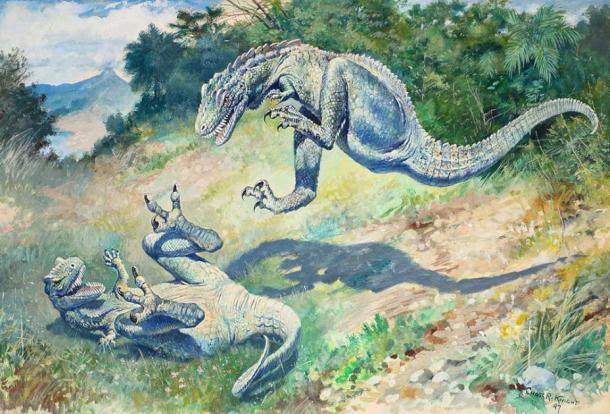Long-Lost Appalachia Was Filled with Dinosaurs You’ve Never Heard Of
Believe it or not, but once upon a time, in the area we now know as North America, there existed a forgotten continent which was inhabited by a cast of peculiar dinosaurs you’ve probably never heard of. In fact, the history of the lost world of Appalachia is basically missing.
North America was once separated into two colossal islands bisected by the Western Interior Seaway stretching from the Gulf of Mexico to the Arctic Ocean. In the Late Cretaceous era, from approximately 100 to 66 million years ago, Appalachia stood as the eastern continent while the western landmass was known as Laramidia.
We’ve all heard of the dinosaur superstars of Laramidia, which include the long-necked giant Alamosaurus, the terrifyingly big-brained Tyrannosaurus rex (which comes from the Greek for “tyrant lizard king”) and the elephant-sized Triceratops with its three-horned face. These “western” dinosaurs populate the majority of museums in the United States, while capturing the imagination of Hollywood filmmakers.
Meanwhile, few have even heard of Appalachia. A giant island, which once stretched from northern Canada to all the way down to modern-day Alabama, scientists believe that eastern Appalachia was completely isolated from the rest of North America for almost 30 million years. This can explain why its flora and fauna were so unique.
With such curious residents, including the duck-billed dinosaur Eotrachodon orientalis, the flesh-ripping and grasping-handed Dryptosaurus aquilunguis, or the bipedal Appalachiosaurus, why don’t we know more about Appalachia?

The painting entitled “Leaping Laelaps”, by Charles R. Knight, made the Dryptosaurus, originally from Appalachia and discovered in modern-day New Jersey, one of the most famous dinosaurs of its time. (Public domain)
Put quite simply, the fossil record from Appalachia has not been kind to paleontologists. But it didn’t start out that way. The 1838 discovery of the Haddonfield hadrosaur, or Hadrosaurus foulkii, in New Jersey, is basically “ground zero” when it comes to dinosaur paleontology. The first dinosaur skeleton to be mounted and put on display, it became a household name in the late 19th century.
Discovering dinosaur fossils is no easy task. Millions of years old, their existence rests on having withstood scavengers and decay, before hopefully settling in a sediment which allowed them to transform into fossils. In the case of Appalachia, the eastern topography itself poses a challenge to paleontologists. The dense vegetation, scarcity of accessible outcrops and wet weather conditions, make it incredibly difficult to excavate fossils.
By the 1870s fossil hunters had left to find more promising fossil deposits from either the western Laramidia landmass or the submerged world of the Western Interior Seaway. By the end of the 20th century, fewer than ten species of Appalachian dinosaurs had been uncovered, with the majority of them pieced together from scattered and partial fossils, or the remains of creatures carried away by the tide into the now-extinct inland sea millions of years ago.
Top image: Representational image of a curious dinosaur. With such curious resident dinosaurs, why don’t we know more about the long-lost continent of Appalachia? Source: simon / Adobe Stock



















